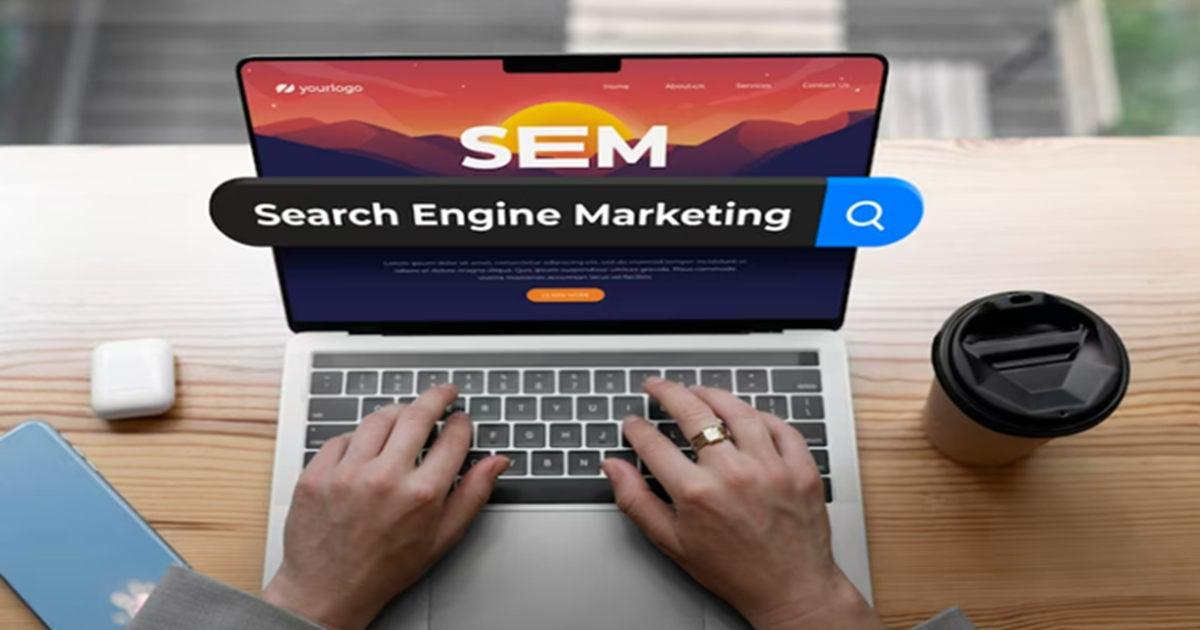Quick Guide: Best way to know Search Engine Marketing

The unthinkable factor of digital marketingThe unthinkable factor of Digital Marketing
Digital marketing has become the best platform nowadays. The main important factors of Online marketing are SEO and SEM.
In my last blog already talked about SEO. Now I’m Talking about Search Engine Marketing(SEM).
Search engine marketing (SEM) is a form of Internet marketing that involves the promotion of websites by increasing their visibility in search engine results pages (SERPs) primarily through paid advertising.
SEM may incorporate search engine optimization (SEO), which adjusts or rewrites website content and site architecture to achieve a higher ranking in search engine results pages to enhance pay-per-click (PPC) listings and increase the Call to action (CTA) on the website.
Search engine marketing is a way to create and edit a website so that search engines rank it higher than other pages.
It should be also focused on keyword marketing or pay-per-click advertising (PPC). The technology enables advertisers to bid on specific keywords or phrases and ensures ads appear with the results of search engines.
There are many reasons why advertisers choose the SEM strategy. First, creating an SEM account is easy and can build traffic quickly based on the degree of competition.
The shopper who uses the search engine to find information tends to trust and focus on the links shown in the results pages.
However, a large number of online sellers do not buy search engine optimization to obtain higher ranking lists of search results but prefer paid links.
- Here are some key components of SEM
- Keywords: These are the words or phrases that advertisers bid on to display their ads when users search for those specific terms. Choosing the right keywords is crucial to ensure your ads reach the right audience.
- Ad Copy: This refers to the text and content of the advertisement. Well-crafted ad copy should be relevant and engaging, and encourage users to click on the ad to learn more.
- Landing Pages: When users click on your ads, they should be directed to a specific webpage relevant to the ad’s content. This is called the landing page. It’s essential to have a well-designed, user-friendly landing page that delivers what the ad promised.
- Bid Auction: Search engines like Google use an auction-based system to determine which ads appear on the SERPs. Advertisers bid on keywords, and the search engine’s algorithm considers the bid amount, ad relevance, and other factors to determine the ad’s position.
- Quality Score: This is a metric used by search engines to assess the quality and relevance of an ad and its corresponding landing page. A higher quality score can lead to better ad positions and lower costs.
- Ad Extensions: These are additional pieces of information that can be added to your ad, such as site links, phone numbers, or location information, to provide more value to potential customers.
- Click-Through Rate (CTR): CTR measures the percentage of users who click on your ad after seeing it. A high CTR indicates that your ad is relevant and appealing to the target audience.
- Conversion Tracking: To measure the effectiveness of your SEM campaigns, it’s essential to track conversions, which are specific actions you want users to take, such as making a purchase, filling out a form, or signing up for a newsletter.
- Campaign Management: This involves the ongoing monitoring, optimization, and adjustments of your SEM campaigns. Regularly analyzing performance metrics and making necessary changes will help improve campaign effectiveness.

- Something Unique about SEM
- Targeted Advertising: SEM allows advertisers to target specific keywords and search queries. This means that ads are shown to users actively searching for products, services, or information related to those keywords. This targeting ensures that ads are relevant to users, increasing the likelihood of conversion.
- Immediate Visibility: Unlike Search Engine Optimization (SEO), which takes time to improve organic rankings, SEM provides immediate visibility. As soon as the ad campaign is set up and approved, ads can start appearing on the search engine results pages (SERPs) and driving traffic to the website.
- Flexible Budgeting: SEM platforms like Google Ads and Microsoft Advertising allow advertisers to set their budgets and bid amounts for keywords. This flexibility allows businesses of all sizes to participate in SEM and adjust their spending based on performance and available resources.
- Pay-per-Click (PPC) Model: SEM typically operates on a pay-per-click (PPC) model, where advertisers only pay when someone clicks on their ad. This means that businesses pay for actual traffic and potential leads, making it a cost-effective marketing strategy.
- Measurable Results: SEM provides detailed analytics and performance metrics, allowing advertisers to measure the success of their campaigns accurately. Information such as click-through rates (CTR), conversion rates, and return on investment (ROI) can be easily tracked, helping businesses refine their marketing strategies.
- Geotargeting and Ad Scheduling: SEM platforms offer advanced targeting options, including geotargeting, which allows advertisers to show their ads only to users in specific locations. Additionally, ad scheduling enables advertisers to display ads during specific days and hours, optimizing for peak performance times.
- A/B Testing: Advertisers can run A/B tests to compare different ad variations, headlines, call-to-action (CTA) buttons, or landing pages. By experimenting with different elements, businesses can identify which strategies generate the best results.
- Remarketing: SEM allows for remarketing campaigns, which target users who have previously visited a website but didn’t convert. By showing tailored ads to these users as they browse other websites or use search engines again, businesses can reinforce their brand and increase the chances of conversion.
Overall, SEM offers a powerful and dynamic advertising platform that can help businesses reach their target audience effectively, drive immediate results, and maintain full control over their marketing budget and strategies. When executed strategically, SEM can be a valuable tool for businesses to achieve their marketing goals and stay competitive in the online landscape.
One special factor of Search Engine Marketing (SEM) is its ability to provide businesses with a level playing field in the digital advertising landscape. Unlike traditional advertising channels, SEM offers unique advantages that can benefit businesses of all sizes:
Equal Visibility Opportunities: SEM allows businesses of all sizes, whether large corporations or small startups, to compete for ad placements on search engine results pages (SERPs).
Advertisers bid on keywords, and the relevance and quality of their ads are considered, not just the budget. This means that even smaller businesses with modest budgets can appear alongside larger competitors if they have highly relevant and well-optimized ads.
Cost-Effective Pay-Per-Click (PPC) Model: SEM operates on a pay-per-click (PPC) model, where advertisers only pay when someone clicks on their ad. This cost-effective approach means that businesses pay for actual engagement, such as clicks and potential leads, rather than impressions.
Cross-Channel Integration: SEM can complement other digital marketing channels and efforts.
By integrating SEM with other tactics such as SEO, social media marketing, and content marketing, businesses can create a cohesive and comprehensive digital marketing strategy that maximizes their online presence.

